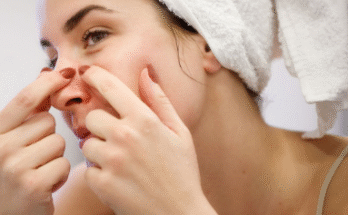Acne is one of the most common skin concerns worldwide, affecting people of all ages. Whether it shows up as occasional breakouts or persistent blemishes, dealing with acne can be frustrating.
Among the many ingredients used to manage acne, salicylic acid stands out as one of the most effective and dermatologist-approved options. Understanding how it works can help you make better skincare choices and maintain clearer, healthier skin.
Salicylic acid is a type of beta hydroxy acid (BHA) derived from willow bark. What makes it unique is its ability to deeply penetrate the pores, unlike water-soluble acids that stay on the surface of the skin.
Acne often starts when pores become clogged with excess oil, dead skin cells, and bacteria. Salicylic acid works by breaking down the bonds that hold these dead skin cells together, helping to unclog pores and prevent new breakouts from forming.
One of the key benefits of salicylic acid is its exfoliating power. By gently removing the outer layer of dead skin cells, it smooths the skin’s surface and allows other skincare products to work more effectively. This process also helps reduce the appearance of blackheads and whiteheads, which are two common types of non-inflammatory acne. Over time, regular use of salicylic acid can lead to a more refined texture and clearer complexion.
Salicylic acid also has anti-inflammatory properties, which is especially helpful for calming red, swollen pimples. When skin becomes irritated due to clogged pores or bacteria, inflammation occurs, leading to redness and discomfort. Salicylic acid helps soothe this irritation, reducing the size and intensity of breakouts. This gentle but effective action makes it suitable for many skin types, even for those who experience sensitivity.
Another important role of salicylic acid is its ability to control excess oil production. Oily skin is one of the main factors contributing to acne formation, as excess sebum can trap dirt and bacteria inside pores. By regulating oil levels without stripping the skin of its natural moisture, salicylic acid helps maintain a balanced environment where acne-causing bacteria are less likely to thrive. This balance is key to preventing future breakouts and keeping the skin healthy.
In addition to treating existing blemishes, salicylic acid can also help fade the marks left behind by acne. Because it encourages cell turnover, it helps the skin renew itself more quickly, gradually reducing the appearance of dark spots and uneven tone. While it is not a bleaching agent, this renewing effect can help achieve a more radiant and even complexion with consistent use.
To get the best results from salicylic acid, it is important to use it correctly. Start with a lower concentration, usually around 0.5% to 2%, especially if you have never used it before. Products such as cleansers, toners, and leave-on treatments often contain these concentrations. Begin with once-a-day or every-other-day application, depending on how your skin responds. Overuse can sometimes lead to dryness or mild irritation, so balancing usage with adequate hydration and sun protection is essential.
Pairing salicylic acid with a gentle moisturizer can help keep the skin barrier strong and prevent over-drying. Using sunscreen daily is also crucial, as exfoliating acids can make your skin more sensitive to sunlight. By following these simple steps, you can enjoy the benefits of salicylic acid safely and effectively.
In conclusion, salicylic acid is a powerful ally in the fight against acne. Its ability to exfoliate deeply, unclog pores, reduce inflammation, and balance oil production makes it one of the most trusted ingredients in skincare. With regular and proper use, it can help reveal smoother, clearer, and healthier-looking skin. Whether you experience mild breakouts or more persistent acne, incorporating salicylic acid into your routine can make a noticeable difference over time, giving you the confidence that comes with a fresh, glowing complexion.


